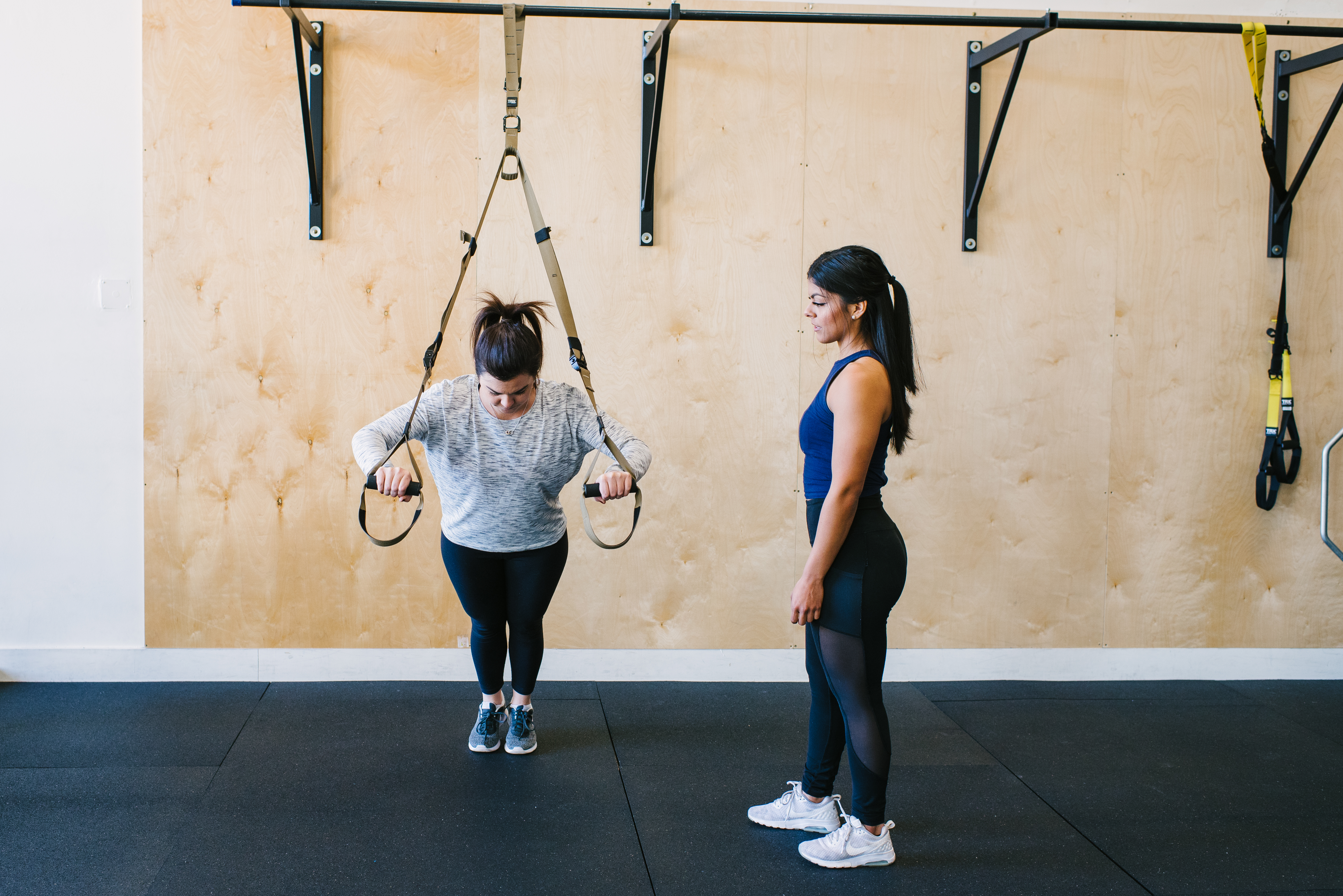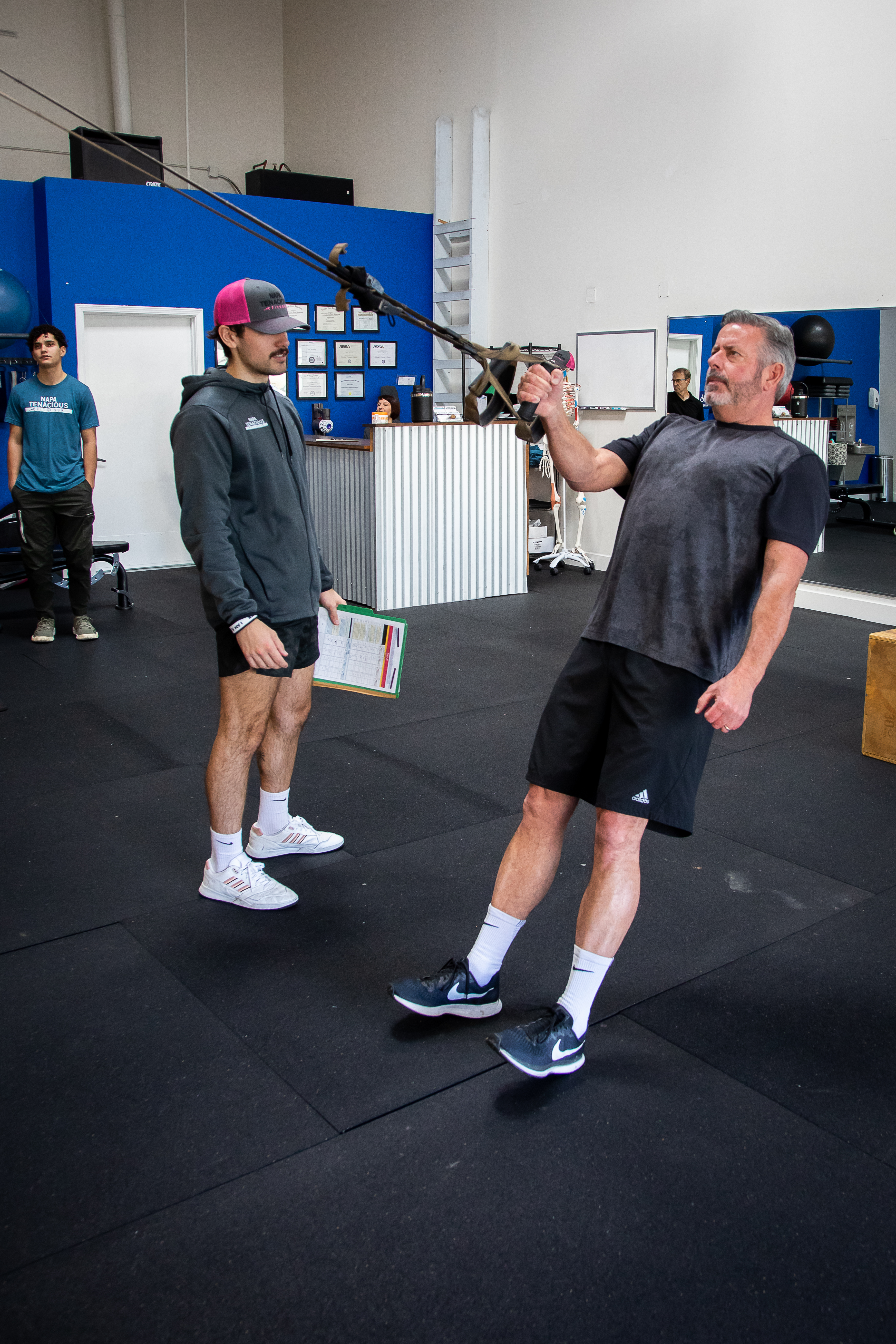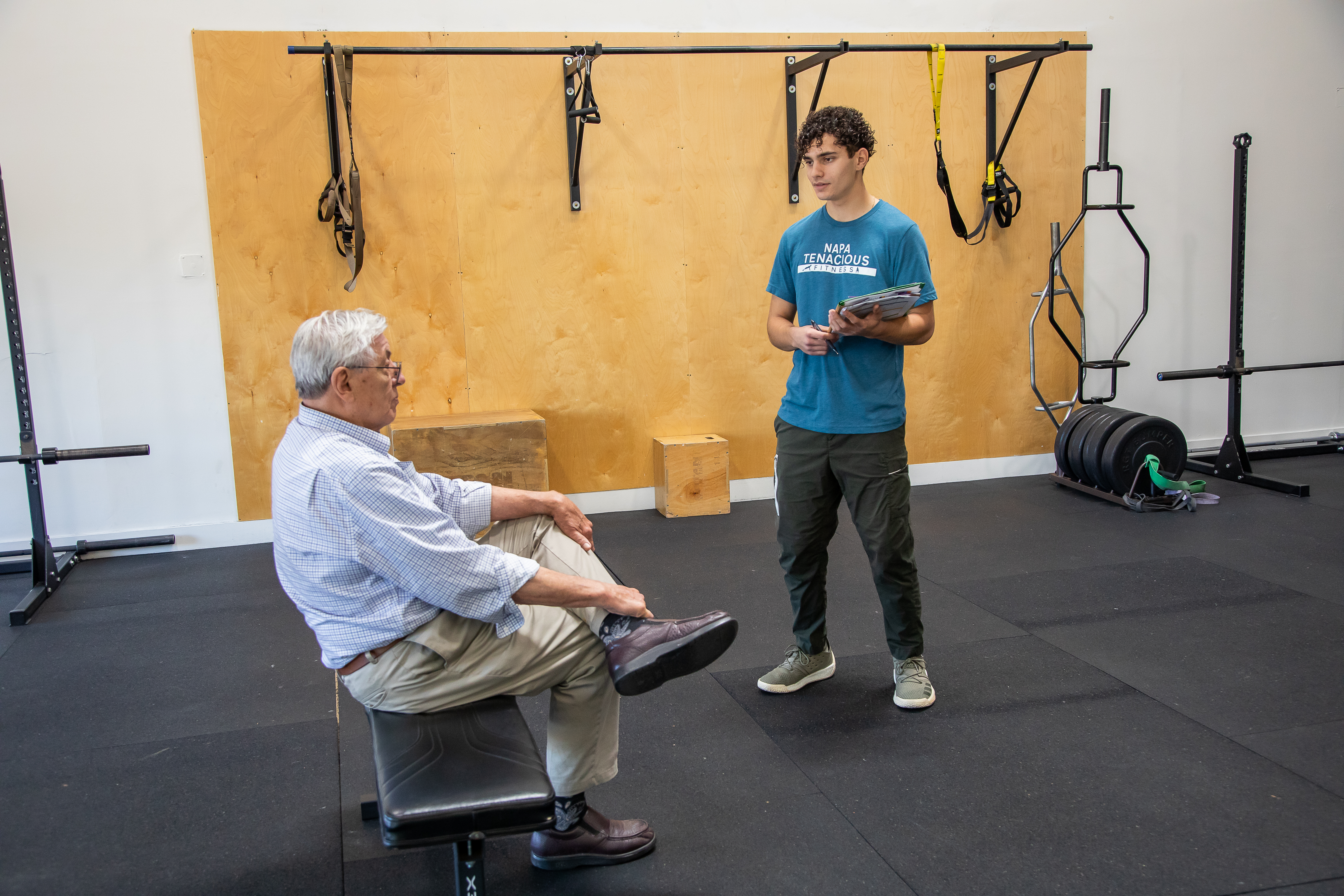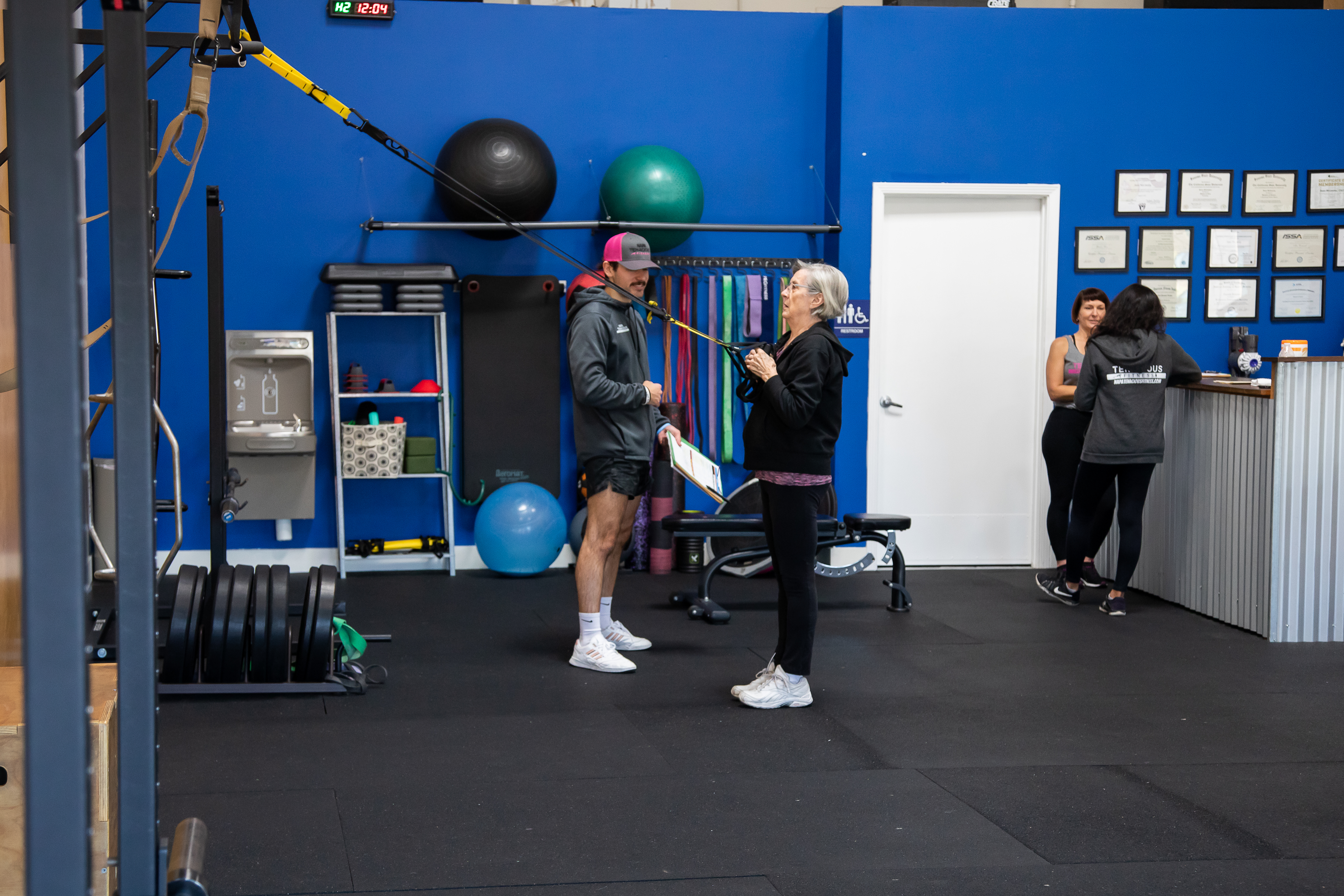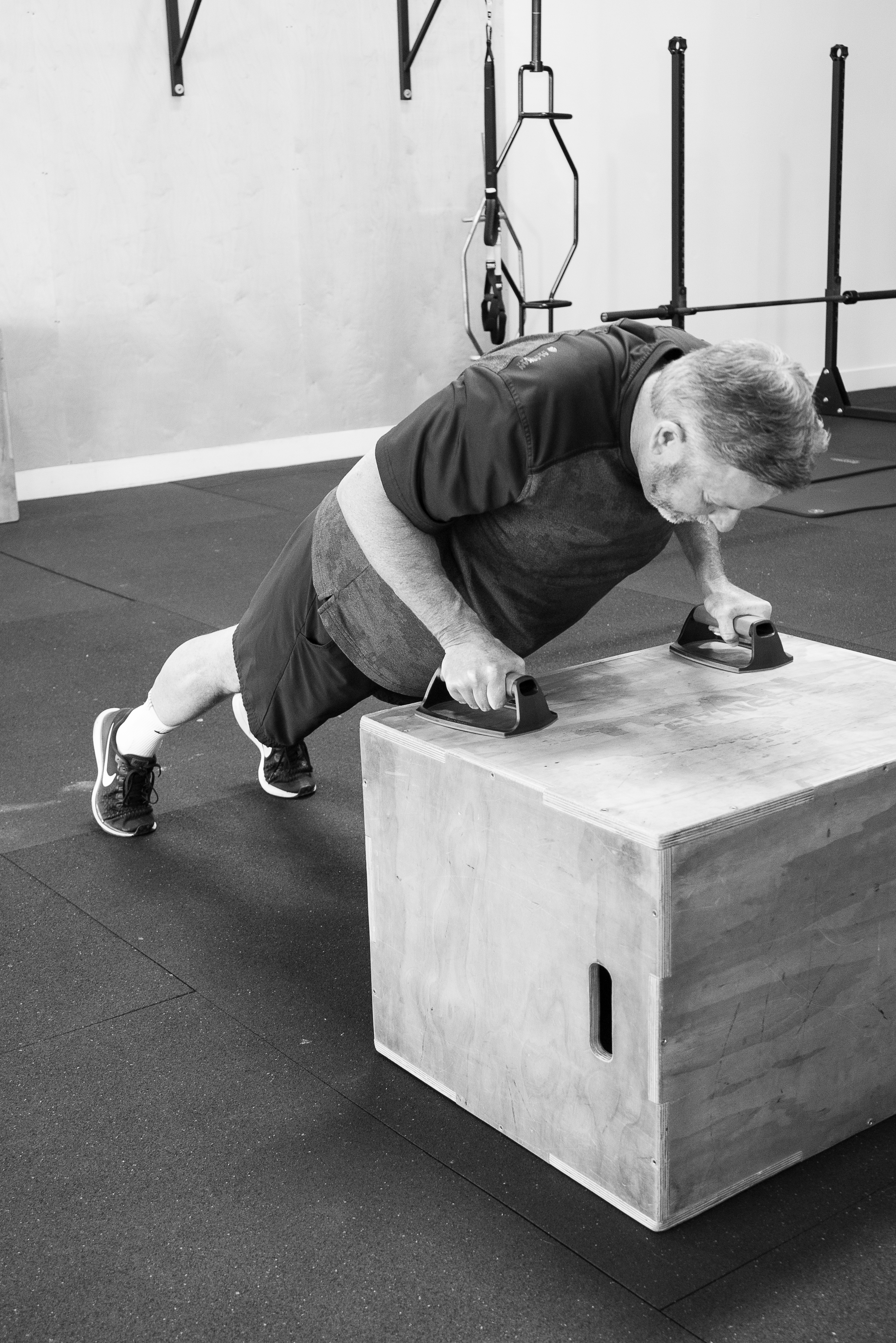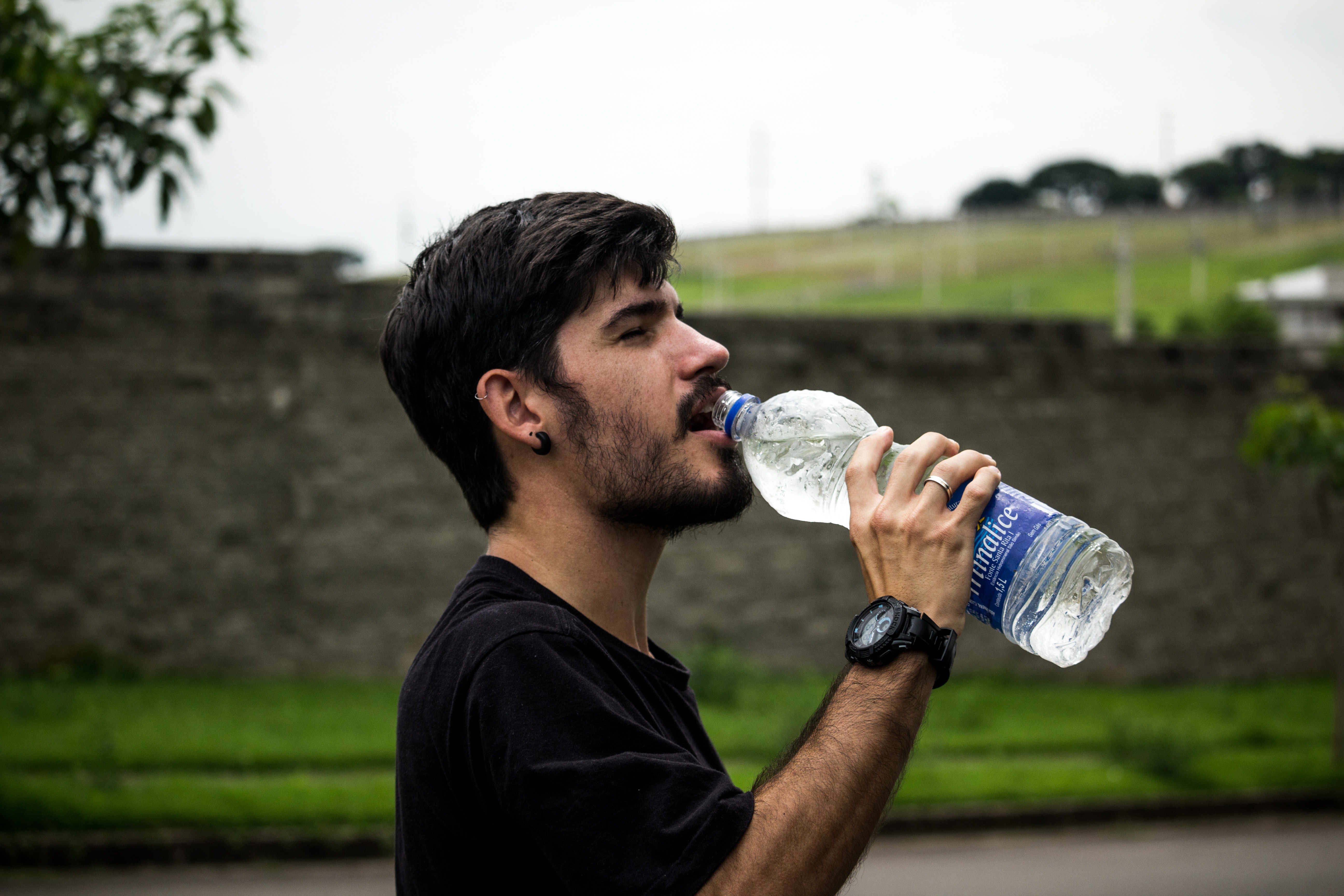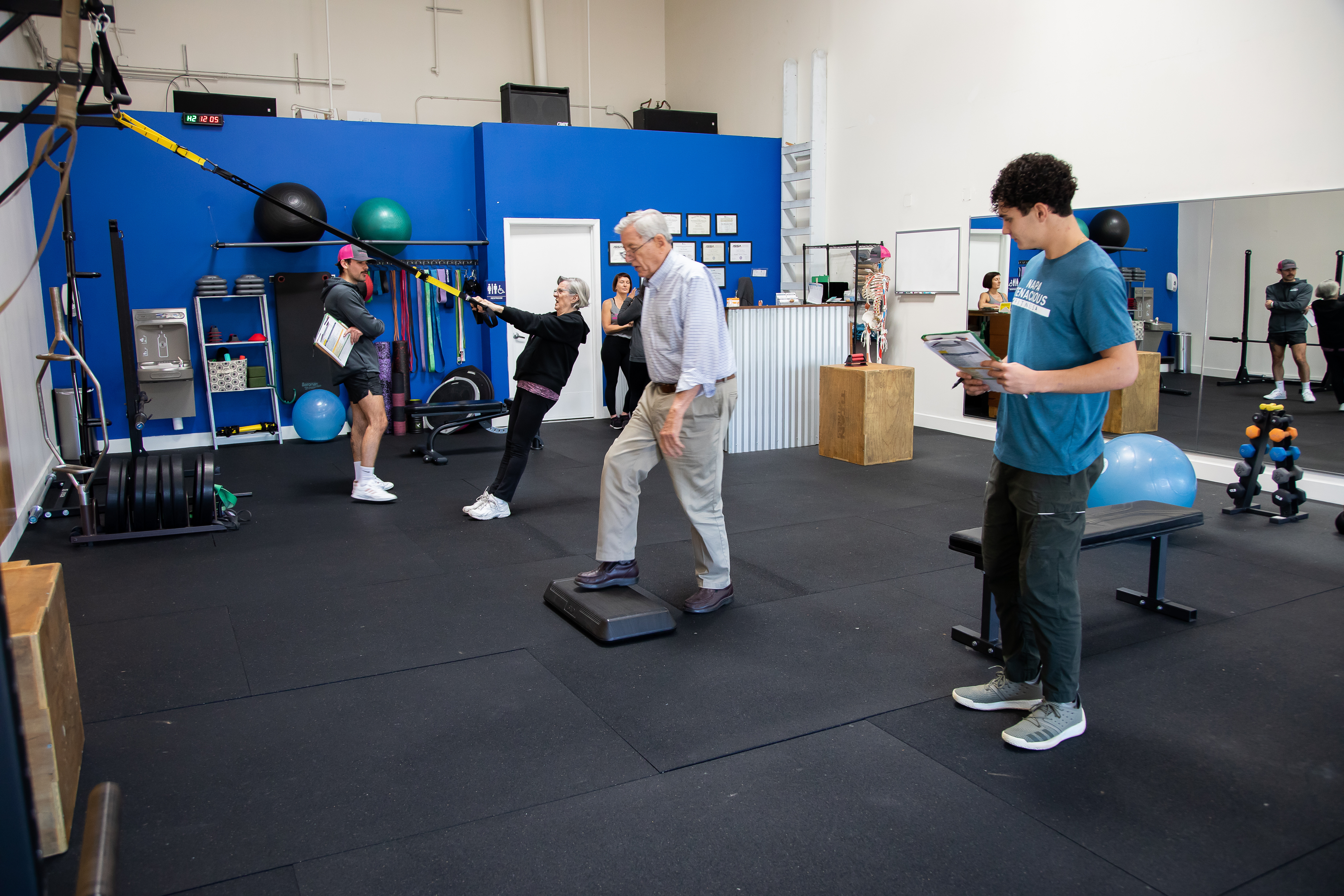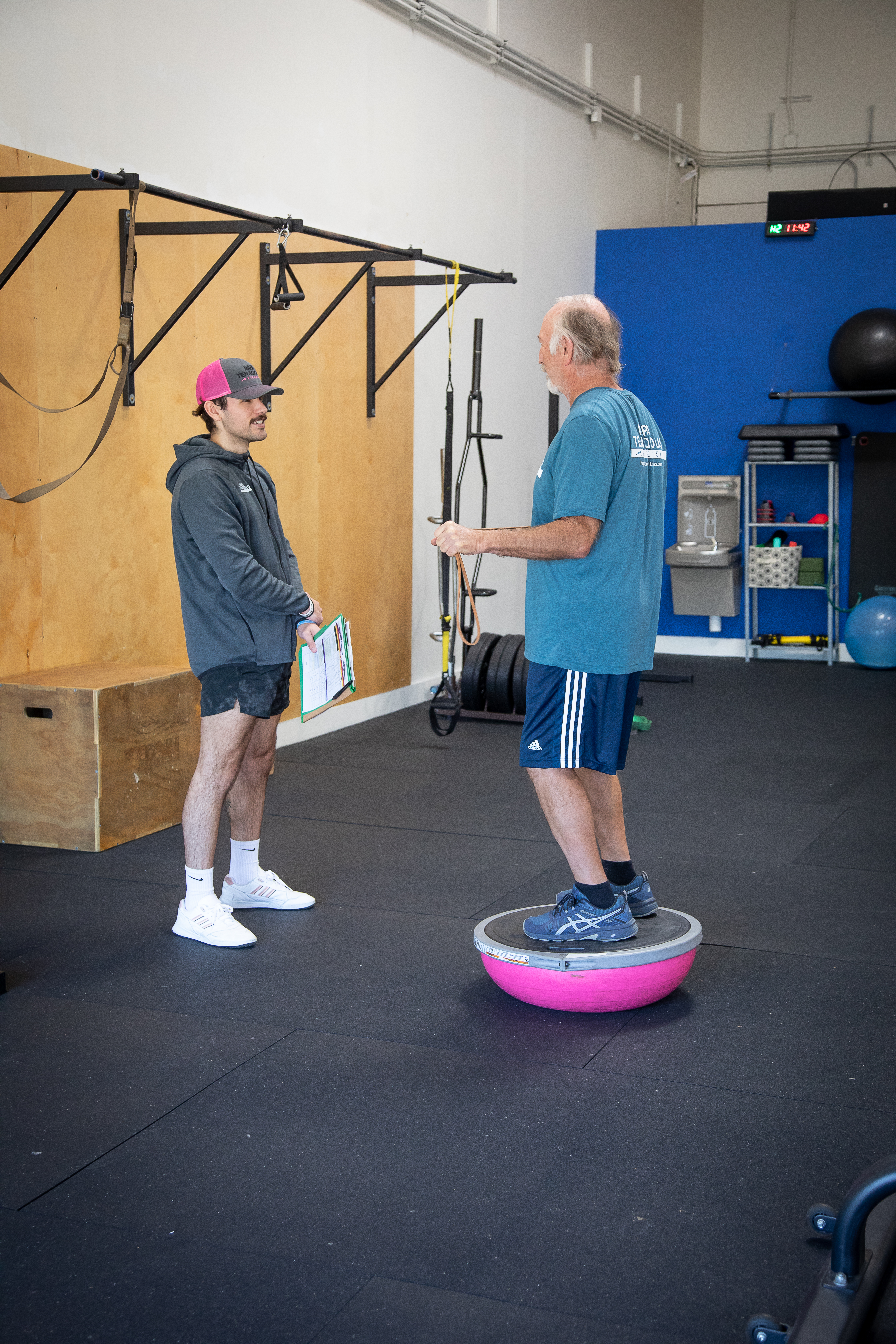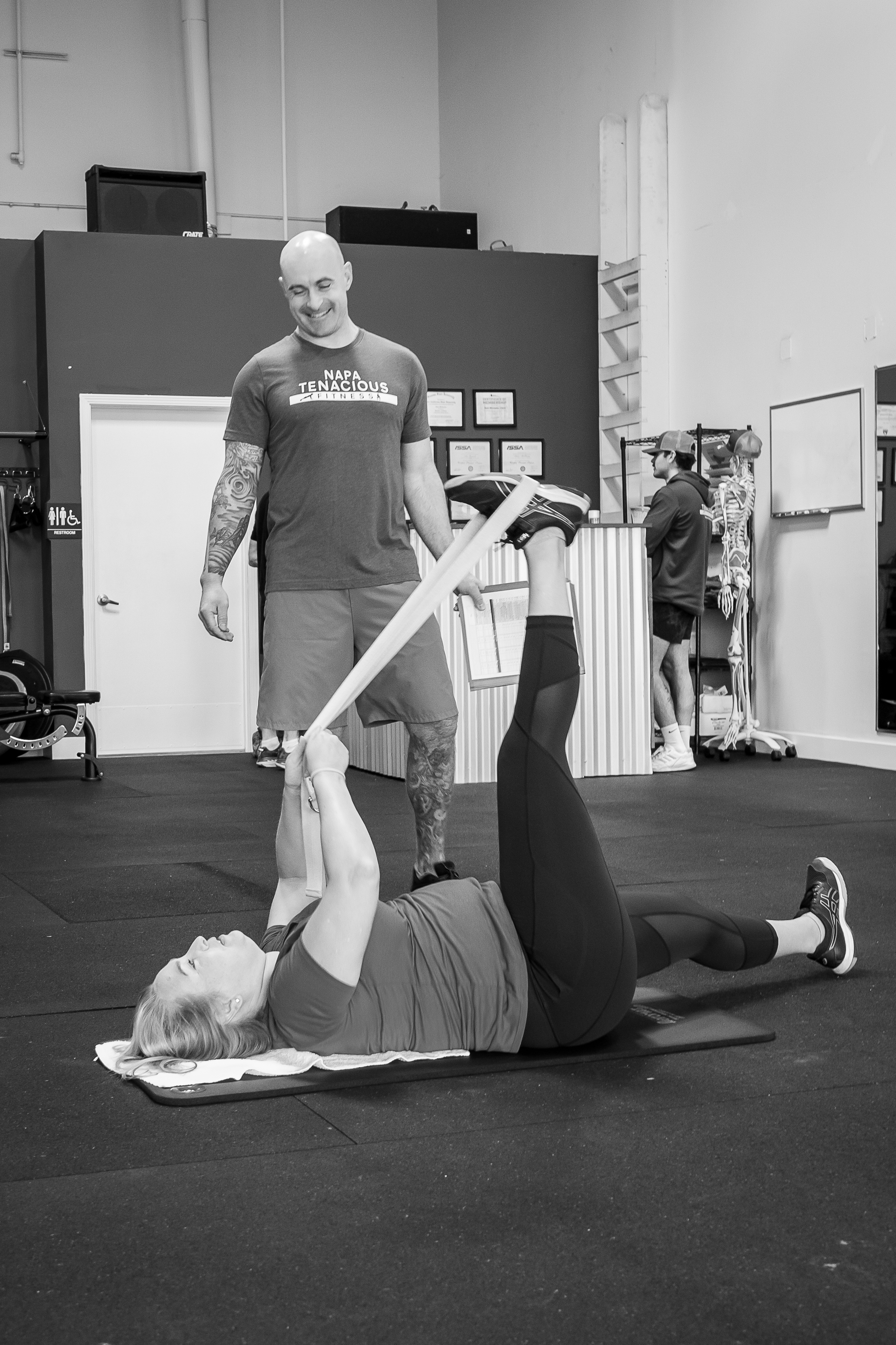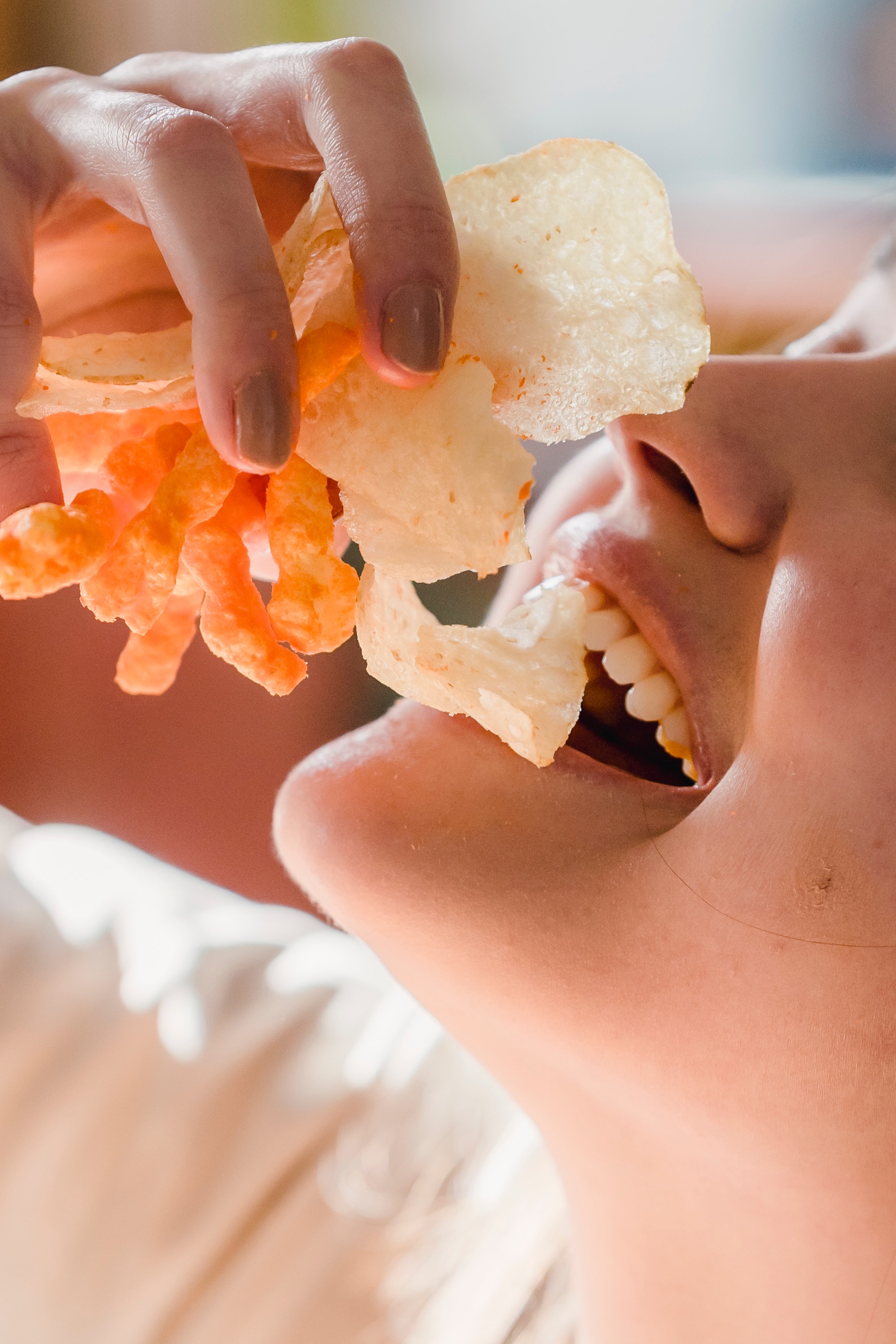Possessing a developed upper shoulder, chest, and triceps region means more than having the ability to sport a tank top on a seventy-eight-degree, sun-filled day in northern California. The musculature of the upper extremities has many valuable functions. In particular, the muscles responsible for arm extension are at the top of the list of essential body parts for upper body strengthening exercises. Much like Alaskan King Crab is in the upper echelon of the seafood world, the pushup movement sits on the throne of upper body exercises.
Muscles involved in performing an optimal pushup include the upper deltoid, pectorals, core stabilizing muscles around the anterior and posterior trunk, and the magnificent triceps, located on the posterior (rear) side of the arm. We spotlight triceps in our personal training clients’ exercise prescriptions because of its application to important facets of our everyday lives. Triceps are involved in various applications in our lives whenever we extend our arms in front of us or when pushing off against something.
Leaning against a wall to bend over and slide on loafers requires arm strength to hold oneself up while posting an extended arm against the wall. Getting up from the seat of your car during a routine trip to the supermarket involves using the arms to push ourselves out of the seat. A ritual all humans participate sometime throughout the day are visits to the bathroom, in which we push ourselves up from the toilet by posting our arms on our knees to stand up. Performing these tasks without sufficient triceps strength could put us in a situation in which we avoid certain activities due to a lack of strength.
Specific populations view getting up from the ground as a daunting task. Individuals with knee injuries, just getting out of surgery, overweight, or someone of advanced age can have an extra challenge dealt to them when presented with getting up from the floor. These physical afflictions have correlations with decreased triceps strength. If we shed light upon these activities, we can appreciate the importance of upper extremity muscle strength responsible for pushing the body away from objects.
An exercise technique we focus on with our personal training clients is the mastery of pushups. This exercise applies muscular stress to a vast surface area of upper extremity muscles. No matter the fitness levels, some form of push can be used to improve upper body strength for extending the upper arm’s ability to push the object away from the body with the arm.
Here are a few exercises we start with as a foundation with our personal training clients to build base level strength of the muscles of arm extension:
- Incline straight arm plank: The plank exercise is one of the most straightforward exercises to master and helps to obtain optimal upper body strength. Aiming to hold a plank for thirty seconds while posting the body over the ground with a rigid spine indicates that the arms supporting the weight of the body for a prolonged period has optimal strength. If you are unfamiliar with how to perform the plank, start by practicing the planking exercise on a stable, inclined surface. For example, a countertop. While maintaining the spine in a rigid position and ensuring the body is straight, post the arms on the countertop and hold this position for fifteen to thirty seconds. Over time, the body will become stronger. As the body gets stronger, hold the position for a more extended period.
- Half Depth Incline Pushups: Mastering the ability to efficiently move your body up and down while in a face-down position requires optimal upper-body pushing strength. As much as being able to push oneself up from a prone position is where we want our muscles of upper body pushing movements to be, understanding how to layer strength and build muscle is essential. If performing a pushup from flat on the ground is a challenge, revert to the example of modifying the plank exercise and position yourself on an inclined surface. Additionally, shave off another layer of difficulty by performing a pushup with only half the distance traveled toward the ground.
The thought of performing pushups can be intimidating. Visions of Sylvester Stallone sweating profusely as his eyes are in a crazed red glare while doing four thousand pushups to train for his bout against Ivan Drago can flash through people’s minds at the very thought of pushups. In other words, this movement can be intimidating. Of course, this exercise doesn’t need to be an example of a bout of Olympic-level human performance. The pushup is an exercise that deserves more attention due to it’s convenience to perform, and it’s a direct application to its ability to help us operate efficiently and without pain in our everyday lives.
Sean McCawley, the founder and owner of Napa Tenacious Fitness in Napa, CA, welcomes questions and comments. Reach him at 707-287-2727, napatenacious@gmail.com or visit the website napatenaciousfitness.com.

